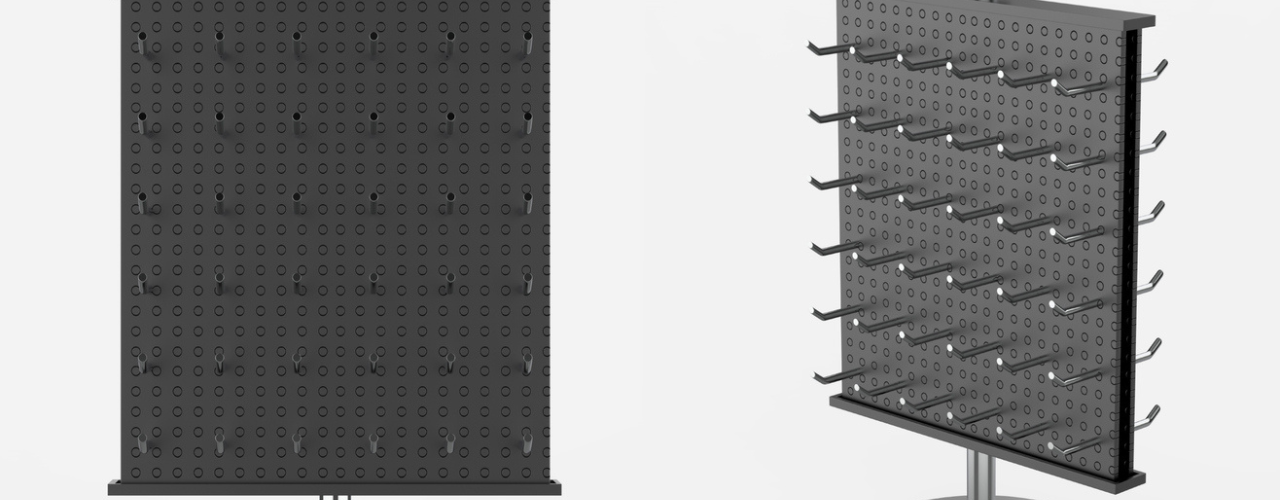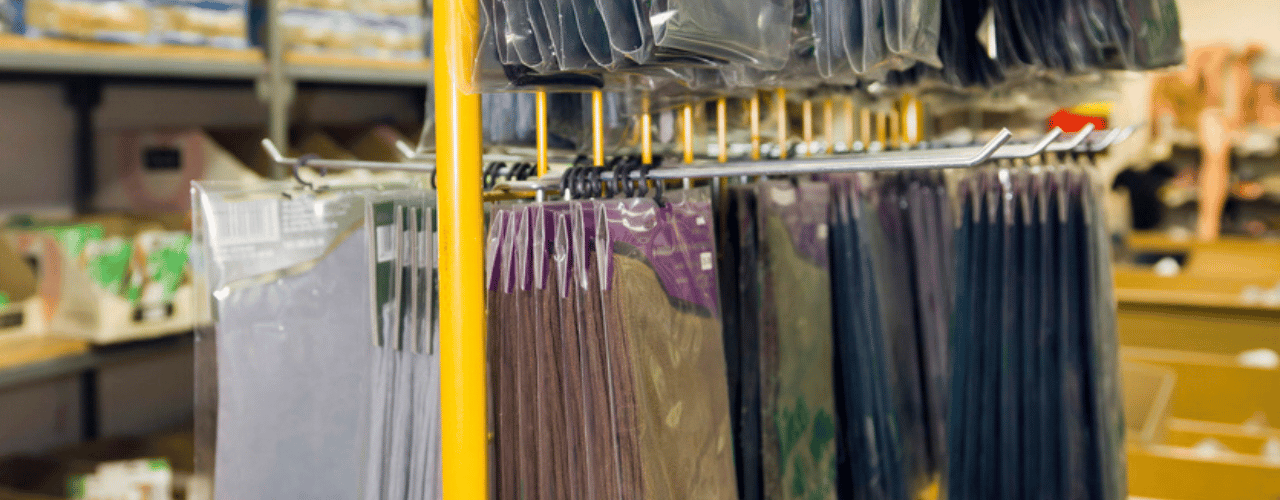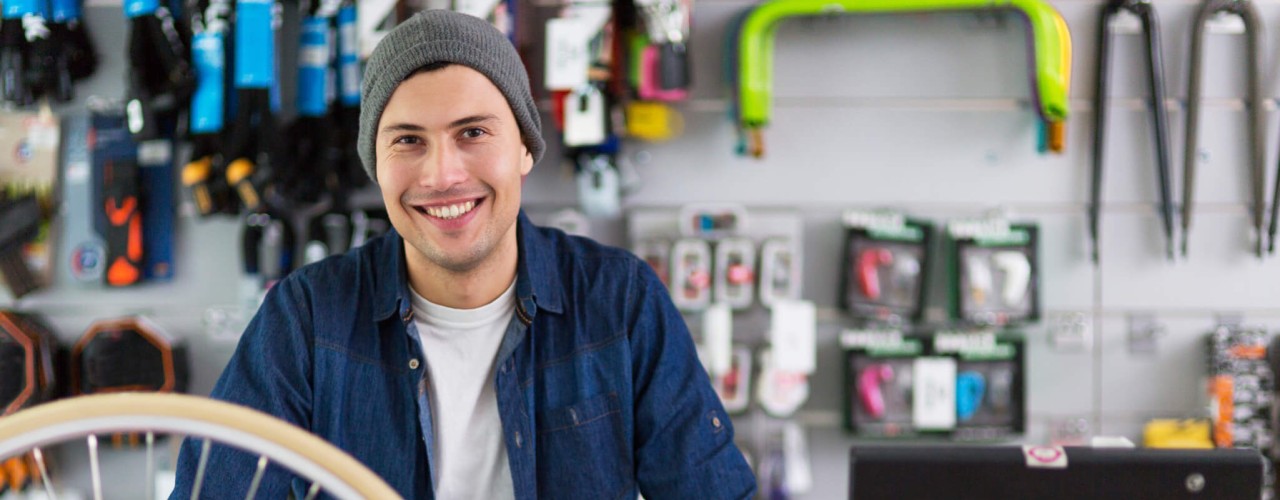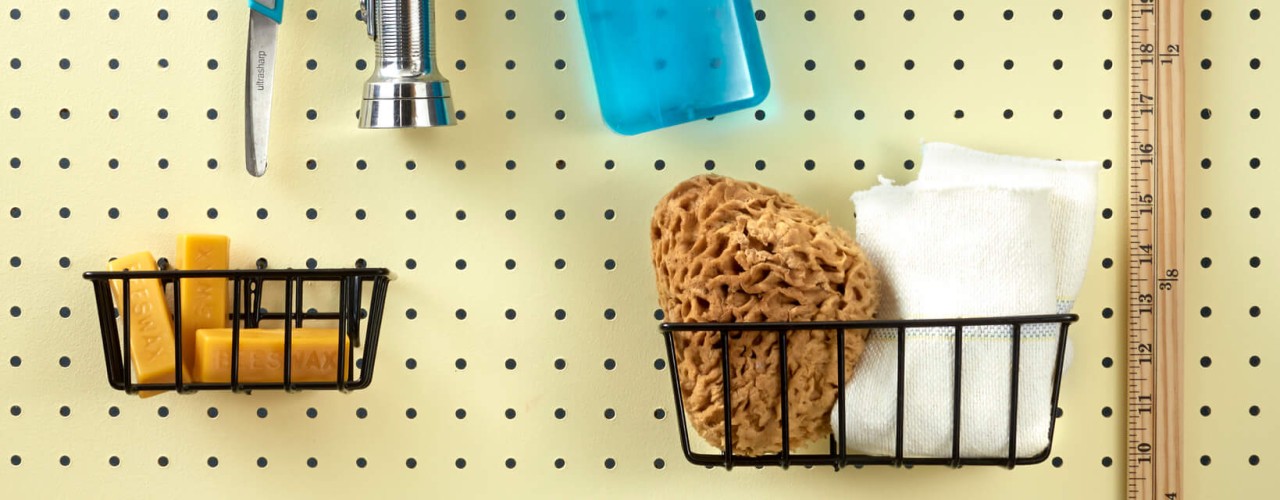Pegboards are among the most versatile storage and display systems available, yet many people underuse them or set them up in ways that waste space. With the right pegs and pegboard setup, walls can be transformed into flexible systems that keep items visible and within reach. They work just as well in commercial settings as they do at home, helping to simplify organisation when used correctly.
What Are Pegboards and Pegs?
These panels are perforated sheets, often made from either wood or metal. The evenly spaced holes allow pegs, pegboard and accessories to be inserted and rearranged as required. Straight hooks work well for tools or packaged goods, while double prong hooks add extra support for heavier loads. Baskets and shelves can also be clipped directly into the board. Their adaptability makes them a popular choice, as layouts can be changed and reconfigured over time.
Which Mistakes Should You Avoid?
Many people miss out on the full benefits of pegboards because of avoidable errors. Issues include:
- Overcrowding: filling every peg hole makes the board cluttered and hard to use
- Mismatched pegs: undersized or poorly fitted pegs cause items to fall
- Ignoring weight limits: hanging heavy tools on unsuitable pegs leads to bending or damage
- Lack of planning: placing items randomly rather than grouping them logically wastes space
- Not using accessories: relying only on hooks instead of baskets or shelves looks too plain
Why Are They So Useful?
Set up correctly, a pegboard arrangement makes it easy to keep items grouped and while also saving floor and counter space. The layout can be adapted whenever your needs change, and customers can quickly see what is available or missing. Keeping everything accessible and organised demonstrates how they are valued in both domestic and commercial settings.
How do Retailers Get the Best from Them?
Retailers often rely on pegboard systems as a core merchandising tool. They maximise limited space and create an easy shopping experience for customers. Packaged items remain in full view, staff can identify low stock, and displays can be easily updated to highlight seasonal products and promotions. Shoppers also benefit from clear and organised layouts that encourage browsing and purchasing. Hardware stores frequently group tools by type, while clothing retailers arrange accessories in neat rows to influence buying decisions.
A frequent question for businesses and households is how to install pegboards correctly. The process is straightforward, but the right approach ensures stability. Panels can be mounted onto wooden battens for extra strength, fixed directly to plasterboard with wall anchors, or secured to brick with masonry plugs. Taking time to prepare the surface and using suitable fixings prevents problems later and gives confidence that it can carry the intended load.
How Can Workshops and Garages Stay Organised?
Workshops and garages benefit from pegboards that allow tools and equipment to be arranged logically and accessed quickly. Sharp tools can be stored safely off benches, and different peg types can hold everything, including spanners and heavy drills.
How Can They Improve Home Organisation?
Homes also benefit from the flexibility of pegboards. Kitchens become more efficient by hanging utensils or small pans for quick access. Utility spaces become easier to manage when cleaning items are stored securely. Adapting a pegboard system to different environments helps reduce clutter where organisation is most needed.
What Are the Best Setup Tips?
To get the most from pegboards, planning and correct use are essential:
- Group items logically – tools by type, retail items by category, or kitchen supplies by their function
- Leave breathing space: avoid using every pegboard hole as spacing improves visibility and usability
- Choose the right peg: match peg length and strength to the item you are storing
- Incorporate accessories: shelves and bins increase versatility beyond just hooks
- Review layouts regularly: reconfigure the board as your needs or stock levels change
Following these principles ensures that a pegs and pegboard installation remains practical rather than becoming cluttered.
Organised displays can also reduce hidden costs. A tidy display helps avoid misplaced products. In workshops, clear layouts reduce tool damage. Over time, fewer replacements and less wasted stock contribute to measurable savings, showing that simple organisation can support the bottom line.
Can They Really Help Save Space?
Another strength of pegboards is their ability to make the most of your space. Longer pegs are ideal for bulkier items, while shorter ones suit smaller ones, and staggered peg lengths prevent overlap. Several boards can be installed side by side to expand capacity further. This modular approach allows the pegboard systems to grow with a business or household and adapt to new requirements.
Which Materials Are Best for Prolonged Use?
High-quality pegboards and pegs are designed for long-term use.
- Metal pegboards: capable of handling repeated loading without bending or warping
- Chrome-plated pegs: provide a clean, professional finish
- Durable materials: reduce replacement costs and maintain a professional appearance
Choosing the right materials ensures reliability and a pegs for pegboard setup that lasts.
How Can They Make Daily Tasks Easier?
Clutter slows people down, but a well-arranged pegs and pegboards setup helps keep routines smooth. It becomes easier to identify missing tools or products. Staff or household members stay organised without reminders, and boards can be adjusted quickly to meet project-specific needs. This makes them valuable for retail and domestic use.
Online retailers also benefit from using pegboards behind the scenes. In stockrooms, products can be arranged so that staff find them quickly when fulfilling orders. Clear layouts reduce picking errors and speed up dispatch, creating a smoother customer experience. For businesses competing in e-commerce, the ability to keep inventory visible and accessible makes pegboards a practical support system for day-to-day operations.
How Do You Get the Most Value from Them?
Pegboards are simple tools but used correctly they can transform the way spaces are managed. By choosing the right equipment, businesses and individuals can create a flexible and lasting system. A carefully planned pegs pegboard strategy ensures long-term efficiency.
Looking to set up or improve your pegboard system with high-quality pegs and accessories? Explore the full range at Foxbarn and see how we can make your space tidy and adaptable.









